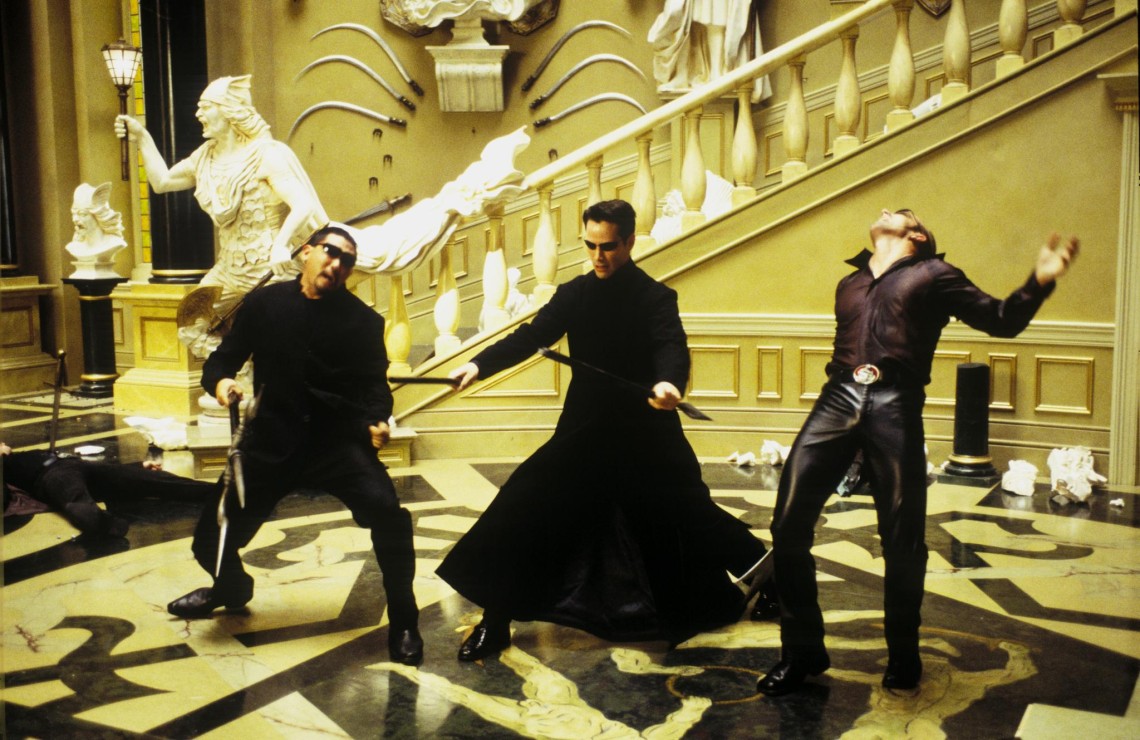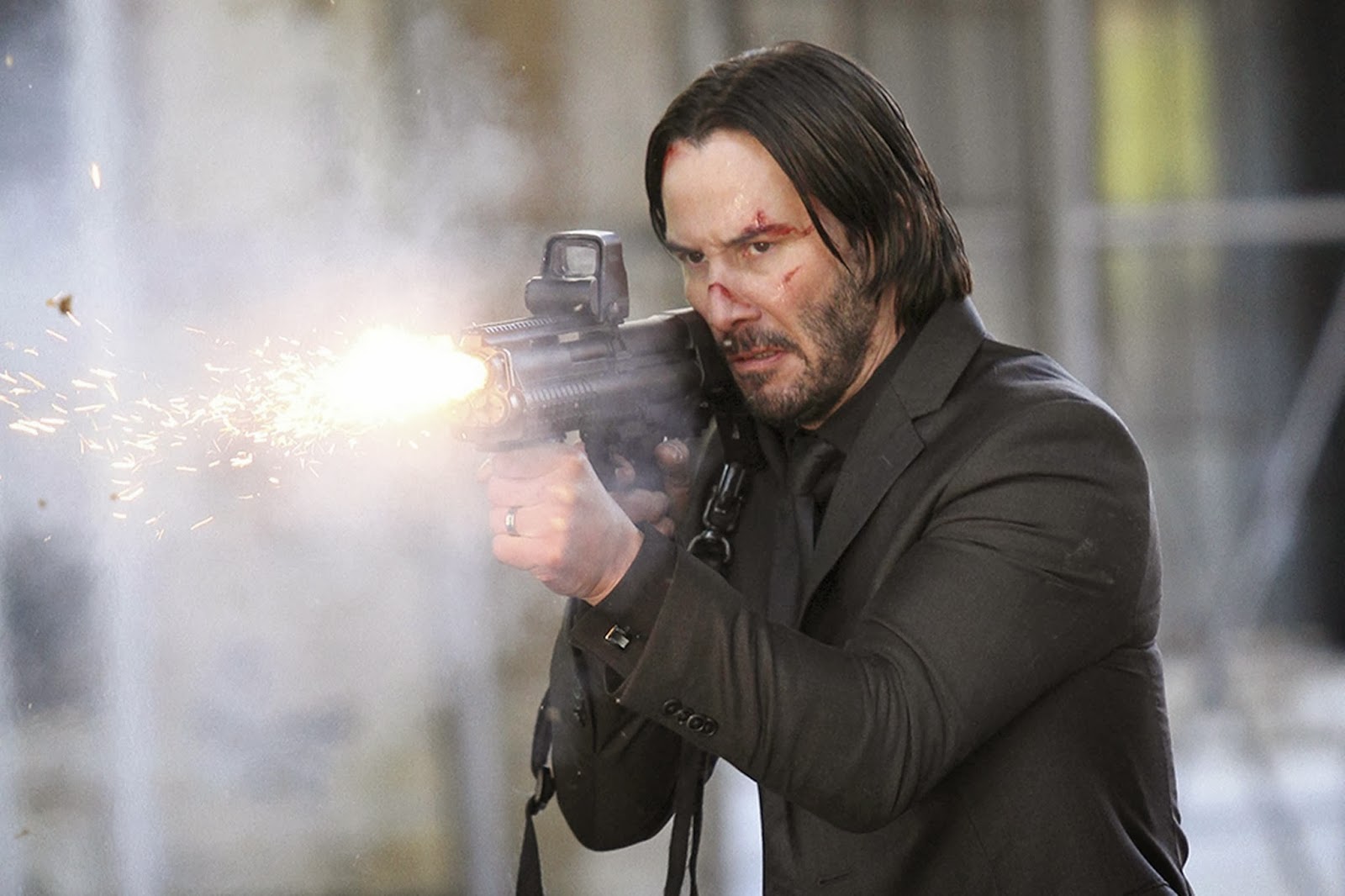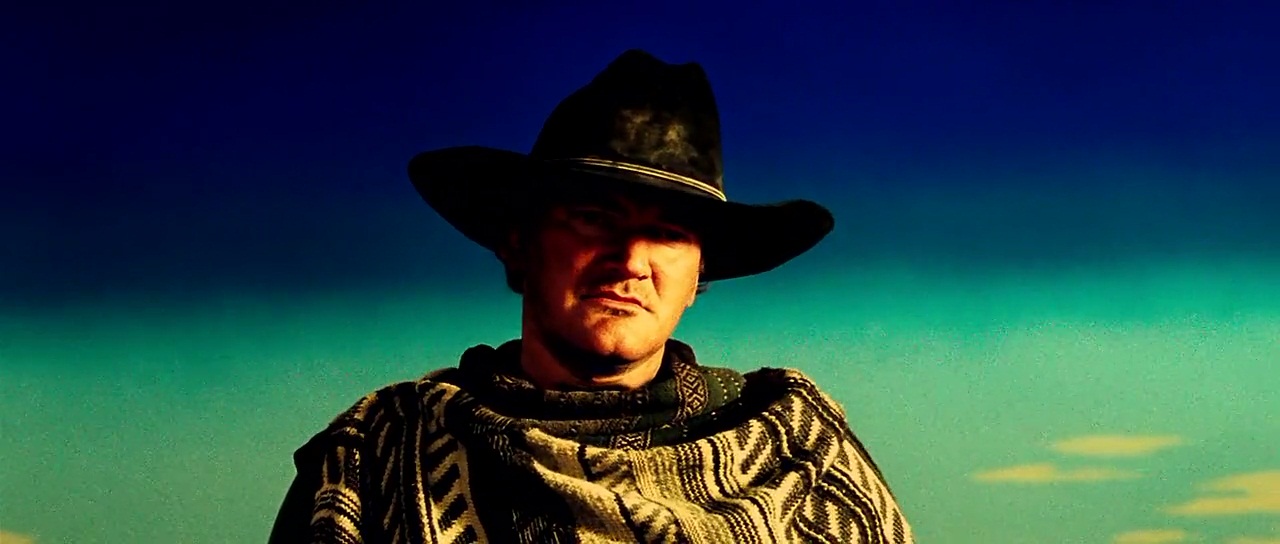Noah Gittell: Here we are again. It’s worth noting that I first pitched the idea of a published discussion on gun violence and the movies back in July, after a gunman killed two people during a screening of Trainwreck in Lafayette, La. Scheduling conflicts kept pushing this discussion back, and eventually I felt it was better to wait. Being both cynical and astute, I told myself, “I’m sure this issue will come up again.” Now, we don’t know the full motives of the man who opened fire yesterday at an Oregon college and killed at least 10 people, but at this point, I’m not even sure that it matters. This is our problem. It’s happened on average once a day this year, and we need to find a solution.
Like the vast majority of Americans, I support stronger gun control laws. I support more funding for mental health. But, unlike many of my film-critic colleagues, I think Hollywood needs to play a part. The science is clear on this issue: Onscreen violence causes aggression in the viewer. It’s a position supported almost unanimously by the medical and mental-health community, and I’m not in a position to disagree. I realize that aggression need not always lead to gun violence—if the aggressor couldn’t get a gun, he couldn’t perpetrate a mass shooting—but since the problem is so urgent and deeply-rooted in our culture, why can’t we acknowledge that violence in the media is at least part of the problem?
Josh Spiegel: First, I imagine we can both agree that it’s truly disturbing to live in a society where you can think, “This issue will rear its ugly head soon,” and be absolutely correct. What happened in Oregon is a tragedy, much like the shooting at the Louisiana movie theater, or the Charleston, S.C., church, and so on. As yet, popular culture hasn’t been cited in this specific shooting as a primary motivation, but it’s come up so often before, to a point of seeming routine. However (and yes, while I bet we mostly agree on the general issue, there is a “however”), saying that onscreen violence inspires aggression in viewers is a lot different to me than saying such violence pushes someone to commit violence on their own. I agree that people can be desensitized to such violence. But I don’t quite see how this is as major an issue as you do, Noah.
NG: I wish it weren’t. If we were conducting policy experiments to try to dramatically reduce gun violence, stronger gun control laws would be first on the list—by a mile. But honestly, I have no faith that our government will ever pass or enact such laws. Think about this: After the shooting at Sandy Hook Elementary School in Connecticut in 2012, the restrictions that Congress was considering were supported by over 90% of voters. Even gun owners supported them by a count of 4 to 1. And still our Congress couldn’t pass even the mildest gun control legislation. I’ve given up on fixing this problem through legislation, and that’s part of what has led me to the movies. We need to change the culture of gun-owning in this country, and even if you don’t agree that onscreen violence is part of the problem, I think it can be part of the solution. We know that people will imitate what they see onscreen, especially young people (that’s why product placement exists). We also know that we, as the critical community, can impact Hollywood’s conscience; just look at the progress that has been made in representation of minority voices onscreen in the last few years. We have a real opportunity to change the way guns are depicted onscreen—I don’t intend to rid movies of them altogether—and frankly, I think it’s the only chance we’ve got.
JS: We’ll have to table the part of the discussion regarding whether or not Congress can get off its collective ass and actually enact a modicum of gun-control legislation at some point soon. (I’m pessimistic, but not as much as you.) Your suggestion that we need to change how guns are portrayed in culture reminds me instantly of how people got very concerned post-Columbine, specifically with The Matrix and Fight Club and other male-driven, seemingly nihilistic genre films. At that time, I was in high school myself, vacillating between rolling my eyes at what I perceived to be Helen Lovejoy-esque concern, and fearing that one of my classmates would be the next to do something horrifying. Now I’m in my early 30s, with an infant son, and yet, no cultural examples of recent memory spring to mind that spurred on other tragedies. (My fear of being near such a tragedy has not gone away; in fact, it’s compounded.) No doubt, screen violence is plenty common now, possibly more than in the ’90s. But are there specific examples you can think of that inspired your reaction? As awful as the Louisiana shooting was, it’s not as if Trainwreck was a film that promoted violence or action.
NG: That’s a good point. No, there is not a single film I can point to that has likely inspired any specific, real-world violence. Personally, I find almost all violence in films upsetting, from a gory horror movie to the no-blood shootings of something like Mission: Impossible – Rogue Nation. And if you do anything to an animal in movie—which seems to be happening a lot these days, from John Wick to The Lobster—you’re dead to me. But instead of pointing to a single example, let me share some broader statistics. A 2013 study showed the incidents of gun violence in movies rated PG-13 had tripled since 1985. That year, for the first time, gun violence was more prevalent in PG-13 movies than in R-rated ones. Now, this gets into the issue of how out-of-whack the MPAA’s sensibilities are, as well as their outsized influence on the content of American film. But I’m wondering if this is a place where we might find consensus on a solution.
The PG-13 rating was essentially created to sell violence to children. It initially came up after parents flipped out about the gore in Indiana Jones and the Temple of Doom, and it was first used on Red Dawn, one of the most violent movies ever at the time. Maybe one way to address this issue is simply to eliminate the PG-13. If we were to go back to a more bifurcated system—PG and R—we could at least be clearer about the fact that children should not be seeing violent content, and perhaps we could start fresh with a new generation of people who are not desensitized to violence at such a young age. This again is a position backed up by science. Although not everyone agrees that adults will copy the violent behavior they witness on-screen, it is a scientific consensus that children will.
JS: First, let’s not forget that the guys who did something to his dog were dead to John Wick as well. (See? I’m part of the problem by cheering on his righteous anger.)
NG: That’s actually a good point. It’s an example of how violence can be used positively to show the emotional impact on the victim’s family.
JS: As long as we agree that John Wick is a badass. Seriously, you raise an intriguing point. Debating the usefulness of the MPAA ratings is its own sprawling thing, but I do agree that the lines have been blurred to a ridiculous degree. It feels like a week doesn’t go by without an otherwise sedate film getting an R rating for too many uses of the word “fuck,” while a superhero movie with cataclysmic destruction gets a PG-13. (In promoting The Intern, Nancy Meyers reminded us that It’s Complicated was rated R because two of its lead characters had no remorse about smoking marijuana. Because how dare they.) And I can see the value of that proposed rating update potentially forcing Hollywood to rethink how it utilizes violence in films designed to be seen by a wide range of people. However (there it is again!), two points: I don’t know if that solves anything about violence in R-rated movies and how audiences interpret that in their everyday lives. Also, I suppose my asking you for an example of a film (or films) that spurred your line of thinking was less about something inspiring people to violence, and more about what film may have made you think a rejigger of screen violence will make a difference. What do you think?
NG: You’re right that eliminating the PG-13 only (potentially) helps with children, even though I think it does send a signal to society at large about what we stand for. There certainly isn’t any surefire way to get adults to stop watching violent content. They sure seem to love it, and they have from the beginning of film itself. The Great Train Robbery had its share of gunfire, if I recall correctly. If I were running the show, Hollywood would think about gunplay the same way it thinks about, say, rape. We can depict it on-screen, but we have to be sensitive to the manner of the depiction. Gun violence would always be depicted as traumatic, never as something fun or cool. I know we’d be giving up a lot of great, fun movies, but I’m willing to do that—as I’m sure you are—if it had a chance of saving lives.
Now I acknowledge there’s quite a leap at the end of that paragraph. We can’t be certain that any of this is possible, or that it would have the desired effect. But I’m desperate, and I think anything is worth trying. Our culture is a very violent one, and it doesn’t stop at the movies. TV is more gruesome than ever. Video games, too. Our national sport actually causes severe brain damage, and yet we watch in larger numbers every day. It just seems really clear to me that we have a cultural problem with violence that is connected to—but also distinct from—gun control itself, and I’m willing to take drastic measures, albeit ones supported by science, to fight it.
JS: Noah, the national sport is baseball, and don’t you forget it.
NG: Let’s go Mets.
JS: Damn straight. Now, I share your desperation. And if losing fun movies at the sake of saving lives is the cost, I’ll take it. But I remain skeptical that it would have an impact. Violence in media is unabated, yes. But ours is a rare country when it comes to mass shootings, in that most other countries don’t suffer from them. Their citizens play violent video games and watch action movies as much as we do. But they don’t ape what they see in real life. I don’t disagree that onscreen violence is a problem (I’m horrified at how lax network TV standards have become that melting human flesh on “Scream Queens” gets a pass, but that’s a separate discussion). And I, like you, want things to change. I’m just not sure this is the battle to fight now. See? I can’t help but end this with a violent metaphor.
NG: Ha! To be fair, that’s the same argument the NRA uses to avoid legislation: “This is not the time to talk about it.” But you make a good point about other countries that watch the same media as the U.S. and have just a fraction of the rate of violent crime. I’ve talked to people who point to Japan as a good example. I’m not very familiar with their contemporary cinema, but I’m told it can be pretty violent, yet, because of their gun control laws, they have basically eliminated gun violence. Again, I don’t see our government ever passing the same types of restrictions, so we need another solution.
I guess I’d just suggest a different way of looking at it: I can’t prove that movies may not be the cause of all this violence, but they could be part of the solution. We don’t have to be able to draw a straight line between Quentin Tarantino and Sandy Hook (or between Neighbors and Elliot Rodger, as Washington Post critic Ann Hornaday controversially did) in order to see that Hollywood could be a leader on this issue and make films that actually promote responsible gun ownership. Best of all, I think Hollywood would actually do it. After the Sandy Hook shooting, there was significant support from industry leaders for some sort of change. Variety put out a special issue called “Violence & Entertainment” calling for increased discussion of the role the movie industry could play in reducing gun violence. Harvey Weinstein called for an industry summit to discuss the issue, and Jamie Foxx publicly acknowledged that the movies play a role in influencing violent behavior. Now, these statement should be taken with a grain of salt, especially since Weinstein and Foxx were promoting Django Unchained at the time. But what it shows is that Hollywood is sensitive to pressure on this issue. I don’t know precisely what we should pressure them to do—firm rules like “guns should only be used in self-defense” feel too specific restrictive—but the critical community has a loud voice these days, and if we could all get on the same page here, I think we could make an impact. It’s worth a try.
JS: I am certainly willing to try something new, in the hope of affecting some level of change. Now, if you’ll excuse me, I have to cut this short so I can watch John Wick again.
NG: And I’ll be revisiting Enchanted April.




















2 thoughts on ““Eliminate PG-13”: A Conversation On Violence in Media”
Please Big HOLLYWOOD, try to get rid of guns on the screen. Companies from outside of the country and the ones pushing VOD?Direct to DVD stuff will get rich beyond imagination.
No mass shooting in other countries? Sweden really did a solid considering it’s small population. John Siegel sounds like he should move out his ideological comfort zone every now and then.
It’s actually not a bad thought to eliminate PG-13. But, it will NEVER happen. The studios make too much money on those tweeners that they simply wouldn’t if the majority of them were to be R-Rated.
One of the ironies of PG-13 that is little commented on, is that it has virtually eliminated all nudity from non-R-rated movies. Since TITANIC, I cannot recall a single instance of nudity on screen (I don’t count totally obscured side angles or half-naked butts that you can show on Network TV). Before the PG-13, there were ample examples of clear nudity in even PG movies.
So, the message to the studios is clear – NO Nudity or real sex in PG/PG-13 movies – but, nearly all the violence you want and that’s ok.